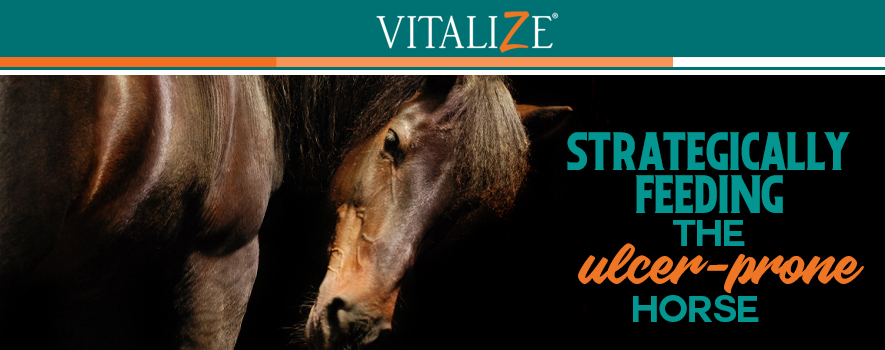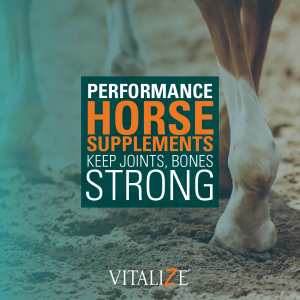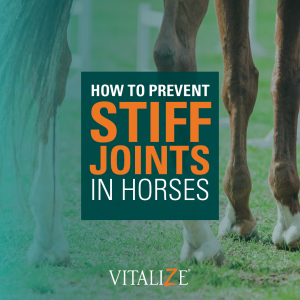
What does an ulcer-prone horse look like? The first thing that comes to mind is the racehorse. He or she is young, travels often, runs its heart out and is fed massive amounts of feed in one day from the very beginning. This assumption is correct, since racehorses have the highest rate of ulcers at 90%.
But the ugly truth is it could be your horse, too. After all, 60 to 90% of all performance horses suffer from gastric ulcers, many of which do not show symptoms. So how can we manage ulcers from day-to-day? Focus on the most important management practice: the diet.
Forage
For any horse, especially the ulcer-prone type, hay should always be available. Ulcers tend to flare up when the stomach is empty, and because we often feed two to three structured meals a day, this can happen frequently. Providing hay 24/7 allows the horse to munch all day, which produces more saliva and naturally buffers the hydrochloric acid in the stomach. Additionally, feeding a forage like alfalfa, which has higher protein and calcium levels, can help maintain the integrity of the stomach lining.
If you have an overweight horse, consider providing it with a lower-calorie forage, like prairie hay, that will not add excess calories but will still provide the same benefits mentioned above.
Reduce Starch
Horse feeds high in concentrated grains, like many of the fortified feeds that performance horses consume, are great for providing calories, but they are not ideal for the ulcer-prone horse because of their high levels of starch. If you have a performance horse that is prone to ulcers and requires a concentrated grain, the best idea is to break down feedings into three to four meals per day. Any longer than six hours in between feedings is too long and will allow for ulcer formulation. Feeding smaller, more frequent meals during the day will also reduce the amount of starch being fed in one meal as well as the amount of time the stomach is left empty, thus reducing the chance of ulcers.
Be Strategic
Not only is what you feed important, but how you do it is equally as vital to your horse’s stomach comfort. Prolonging forage consumption, such as feeding hay in a haynet, can be helpful for the ulcer-prone horse because it reduces the amount of time the stomach is empty and helps to naturally buffer the acid in the stomach.
Additionally, feeding a daily preventative supplement like Vitalize® Alimend® will help your horse’s stomach stay comfortable. Alimend’s formula has a mucoadhesive effect that lines the stomach tissue and is designed to both repair and maintain the integrity of the stomach lining. It contains MHB3® Hyaluronan and Lion’s Mane extract, which have both been proven in clinical research studies to have gastroprotective and healing effects. Alimend is administered with feed twice a day, so the horse receives 24/7 comfort without needing to alter the acidity of the stomach. Because it does not decrease stomach acid, it is ideal for long-term use and allows for less fluctuation in the GI tract. If you are feeding an ulcer-prone horse, consider adding Vitalize Alimend to its diet.
Avoid Stress
Finally, try to avoid any unnecessary stresses that may exacerbate your horse’s issues. Especially if your horse is a performance horse, allow for regular turnout and exercise while away at a competition. Many horses will tell you when they are uncomfortable, so try to predict any possible concerns and eliminate any issues before they can occur. In these instances of high-stress, Vitalize® Equine Gel can help your horse stay at the top of its game by giving it a boost to both its digestive and immune system.
If you have an ulcer-prone horse, you are not alone, and there are a few things you can do to strategically win the game against your horse’s ulcers. Managing a proper diet consisting of maximum forage with minimum starch, as well as adding a gastric health supplement like Vitalize Alimend while reducing any stressors all make up the formula for a healthy gut.

